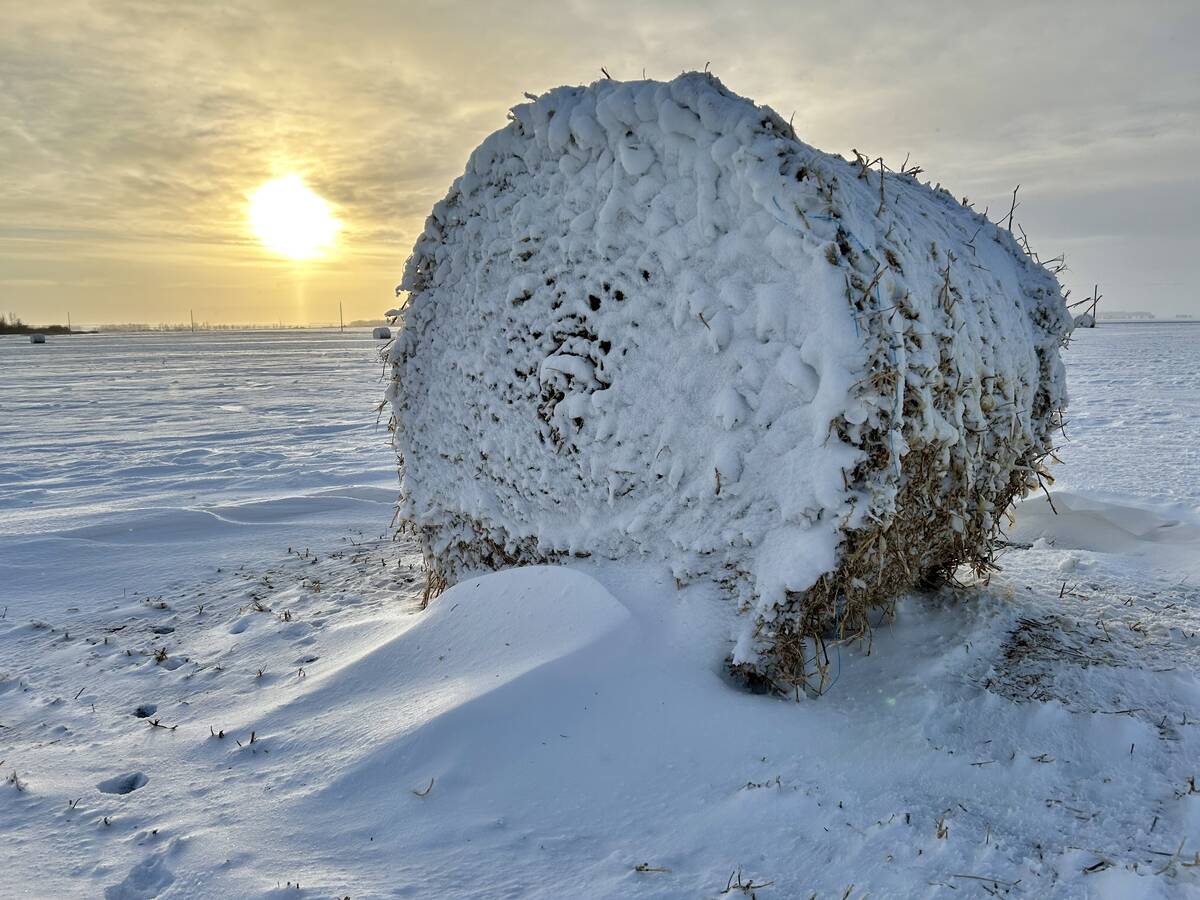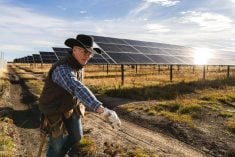The forecast for solar energy generation in Alberta is mostly sunny, but there are a few storm clouds on the horizon.
Solar generation potential
Solar energy comes with a downside — it doesn’t produce at night, and it produces more in the summer than in the winter.
But in Alberta, solar energy actually gives a boost of power to the grid right when it needs it.
“In Alberta, we’re in a really good situation because our power requirements peak in the summer with irrigation and air conditioning use, and the power usage we have is higher during the day than it is at night,” said Keith Hirsche, president of RenuWell Energy Solutions.
Read Also

Prairie winter snowfall forecast 2025-2026
How much snow should farmers in Alberta and elsewhere on the Canadian Prairies expect for the rest of December 2025 and into January-February 2026?
“So one of the great things about solar is that its supply — especially for Alberta — lines up very well with when power is needed.”
Land use
Solar is expanding in Alberta faster than anyone could have predicted, and that’s creating some land-use competition.
“There’s concerns about land use, but developers work hard to site these projects where they will have a minimal impact — where they aren’t taking up good farmland,” said David Vonesch, president of Skyfire Energy.
For the solar projects that the Bow River Irrigation District have put in place, for instance, the land was previously used for grazing.
“Some people may very well have a negative opinion of solar because it’s eating up good land. But this is not prime land,” said general manager Richard Phillips.
“It’s relatively unproductive land for this area, where a lot of the land is very productive. We’re certainly not siting it on the best land we own. We are sympathetic to keeping good farmland as farmland.”
Distribution credits
Smaller-scale solar generators connected to the grid have historically received a credit for the energy they produce, but the Alberta Utilities Commission recently decided to end that credit.
“Losing the distribution-connected credits is hurting things,” said Hirsche. “In four years, it’s winding down to nothing, and that’s impacting the economics of this.
“More and more land is being taken for transmission towers, and it’s basically creating an uneven playing field for these very large transmission-connected power projects. Effectively the rural landowners are subsidizing the transmission-connected generators and the urban customers.”
Transmission line costs
There has been a push to increase transmission line capacity, and the upgrade that’s currently happening in central Alberta will add half a cent per kilowatt hour to every Albertans’ power bill for the next 40 years, said Hirsche.
“We’ve already seen transmission costs go from about one cent a kilowatt hour to four cents a kilowatt hour, and now it’s going to go to 4-1/2 cents a kilowatt hour,” he said.
Irrigation farmers have already seen this happen, he added.
“When everyone went on to irrigation and they privatized energy, their total cost of energy was seven cents a kilowatt hour, which included the transmission and distribution. It was five cents for power and two cents for transmission and distribution,” said Hirsche.
“They’re now paying 14 or 15 cents — five cents is for power and the rest is for distribution and transmission, mostly transmission.”















